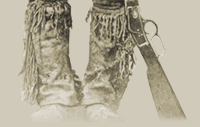|

[ Project Plans | Essential
Questions | Knowledge Hunt | Glossary | Links ]
Held Accountable by the Media…
Writing News Articles to Understand How Governments & Politics
Affect Their Citizens
Introduction
Students need to understand how individuals and groups can impact
the decision making of local and provincial governments, including
ways that leaders are held accountable to their constituents. They
will also begin to recognize the diverse political history that
Alberta has, from different political parties to the rise of many
political Mavericks. What is the history of Alberta politics? Why
is politics important to every citizen in a democratic country?
Why is the media important in the political arena?
Project Explanation
In this project, students will develop an appreciation of the power
of the press in holding politicians accountable to their constituencies.
Students will research and write historical news articles about
political mavericks from Alberta and discuss why a free media is
needed for a democracy to function properly.
Alberta Social Studies Curriculum Unit Connections
Grade Five - Canada: The Land, Histories and Stories
5.3 Canada: Shaping an Identify
Grade Six - Democracy: Action and Participation
6.1 Citizens Participating in Decision Making
Grade Seven - Canada: Origins, Histories and Movement of People
7.2 Following Confederation: Canadian Expansions
Materials and Resources Needed
Procedures
The media is one way politicians are held accountable to the people
they represent in their electorate. Students will research and write
a news article based on one of the Mavericks included in the Politics
section of the Mavericks: An Incorrigible History of Alberta
site. The students will act as journalists who will report on one
of the major events from the political career of one of the Maverick
politicians (it could even be on a Maverick from another section).
Students will work in individually or in small groups to research
and gather information as reporters from the Mavericks site. They
will then work on their own to write the actual article.
To introduce the project, have the students collect and read politics-related
news stories from the newspaper. Have them examine the style, tone
and layout of the writing, as well as the important parts each article
includes. Are any of these events important enough that students
in 2105 will read about them? What events that have taken place
in their lifetime do they think students in 2105 will know about
or study?
Review the main parts of a news article with the students, including
the main "W" questions, which include:
- Who or what is the news?
- Where did it happen?
- When did it happen?
- Who was involved?
- How did it happen?
- Why did it happen?
Explain to the students that they'll be writing news articles
about historic Alberta political events, and that the articles must
answer these five questions.
Have the students or groups choose one of the Mavericks to research.
As they learn about that person, they will need to pick a specific
event to research and write about. Students can use textbooks, encyclopedias,
and other websites, in addition to Mavericks, if they feel they
need more information. Groups should make sure all members have
all information before breaking up to individually write their own
articles.
Once their article is developed, the students may use the Mavericks:
An Incorrigible History of Alberta and ImagesCanada.ca
websites to find photographs to accompany their writing. Some tips
on using the Images Canada web site:
- Just the name can be used in a single search. Searching "frederick
haultain" yields 18 photos, "henrietta muir edwards"
yields 16 photos, "bob edwards" yields 24 photos,
and "william aberhart" yields 85 photos.
- Click on "more information" under each picture to
find other subject terms to use in searching. For example, "social
credit" will yield 208 photos.
- Photos may be copied into another program like Word and then
enlarged or printed in a landscape format if needed.
All images can be reproduced, in print and/or digital format,
for non-commercial, educational purposes. The images must
not be altered or manipulated in any way and proper credit must
accompany the images. See link below for more information.
http://www.imagescanada.ca/r1-230-e.html
After all students are done their news articles, they can examine
the question of "Why is a free media needed for a democracy
to function properly?" The news has been full of articles
about ADSCAM and the Gomery Inquiry. How does the media affect the
importance of these political events?
Assessment and Evaluation
- After the teacher and students collaboratively create a rubric,
students should use it as a guide for their learning as they are
working through the process, regularly checking that all the needed
elements are included in their work and revising as needed. The
rubric can then be used as a formal evaluative tool when they
have completed their project.
- Students may use their rubric as a guide for writing a self-assessment
of their project work. They will determine their level for each
of the categories and use the criteria specified in their rubric
to justify them.
- After completing the project, students may talk or journal about
what they felt they did very positively, what they had difficulty
with, and how they would change how they would approach a similar
project in the future.
Ideas for Enriching this Project
- Students could work in groups to put their articles and photos
together to make the front page of a political newspaper. They
could come up with a creative name for their paper and work together
to create a layout.
 |



![]()
